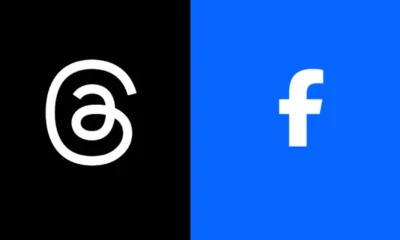MARKETING
How to Sell Products on TikTok

By now, you’ve probably heard a lot of buzz about Gen Z’s favorite social media app, TikTok.
TikTok is a video sharing platform that allows users to create and share dynamic short-form (maximum of 60 seconds) videos.
Users can add song snippets, special effects, and filters to their videos and then share them with a vast global network.
There are more than one billion users on TikTok, and the app is available in over 150 countries. It’s ideal for brands targeting a younger audience, as the majority of TikTok users are between the ages of 10 and 29.
Tapping into this diverse market offers a lucrative opportunity for brands. With the right TikTok marketing techniques, you can leverage this social network and open your brand up to an exciting market of Gen Z’ers and millennials.
Below, I’ll show you the strategies and tactics you need to sell products on TikTok.
Why Should You Sell Products on TikTok?
TikTok is the most-downloaded social app worldwide. In 2020, TikTok was ranked one of the world’s top mobile apps, outperforming YouTtube, Tinder, and Netflix.
Bringing your brand to TikTok gives you visibility with millions of new users worldwide. These new customers have real buying power—–combined, they influence more than $350 billion in annual sales in the US.
TikTok’s unique algorithm means even accounts with little to no followers can go viral on the TikTok For You page (FYP).
Plus, integrations with Shopify and other strong eCommerce platforms have made it easy for brands to sell products directly on TikTok.
When you look at these stats, it’s no surprise brands across the globe are jumping on board and finding creative ways to sell products on TikTok.
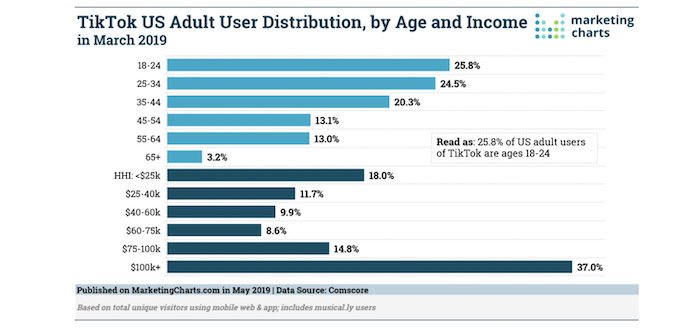
How to Set up an Account in TikTok That Will Drive Sales
If you want to sell products on TikTok, you need to lead your efforts with a strong strategy.
Your TikTok profile acts as your eCommerce home page, so it’s important to optimize your profile before you start selling.
Here are a few easy ways to do this.
1. Describe Your Brand in Your Bio
Your TikTok bio is your chance to introduce your brand and products to your audience.
Your bio is the first thing people will see when they visit your page, so it’s important to make a good first impression. It’s also important to provide accurate information about your brand.
In a few words, describe your brand and what you do. Using keywords in your social networks is the best way to improve your SEO on TikTok.
2. Get Creative With Emojis
Remember, your target market on TikTok is mostly Gen Z’ers, millennials, and Generation Alpha.
That means it’s important to speak their language.
Emojis are colorful and eye-catching and act as visual indicators of your products and services.
Using emojis can help increase conversions in your online store, so be sure to make good use of them when you sell products on TikTok.
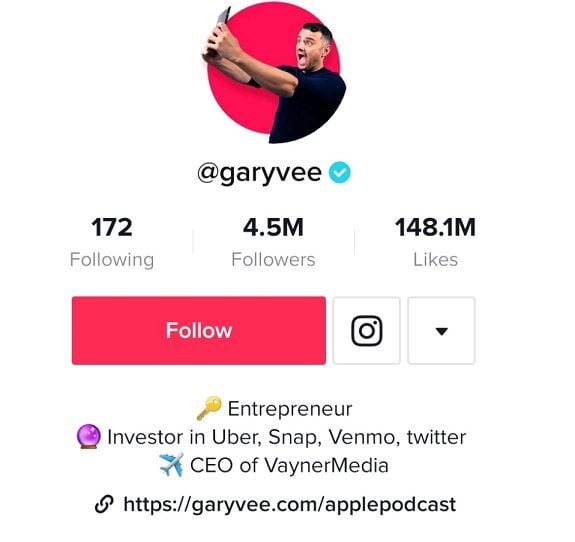
3. Add a CTA
Your TikTok profile should lead users towards actions you want them to take.
Adding a CTA to your profile will tell users exactly what to do next, and can help increase conversions.
For example, you can use a CTA to direct followers to your eCommerce shop, blog, or another social channel where you sell products.
You can also promote discount codes or sales in your TikTok bio.
How to Sell Products on TikTok
Once you have your bio set up, it’s time to create your strategy. Here are a few tips to help your products sell.
1. Use Sponsor Branded Hashtags
If you want to sell products on TikTok, you need to get your brand in front of as many people as possible.
One of the most effective ways to do this is by sponsoring a branded hashtag that asks users to create user-generated content (UGC). TikTok calls this the Hashtag Challenge Plus, and it allows users to shop for products related to a sponsored hashtag.
Once you establish your challenge, you can create a paid-for hashtag with a specific landing page to direct your users towards a sale. The challenge will show up on the Discovery page, which drives more views.
TikTok also allows in-app shopping for your hashtag so viewers can buy directly from the app.
Brands such as Kroger have leveraged this feature effectively, with campaigns such as the #TransformUrDorm challenge. TikTok users were asked to create before and after videos of their dorm room makeovers. From there, they were prompted to buy dorm items such as toasters and popcorn makers directly in the TikTok app.
The award-winning campaign brought Kroger more than 800 million views and generated 304k UGC videos.
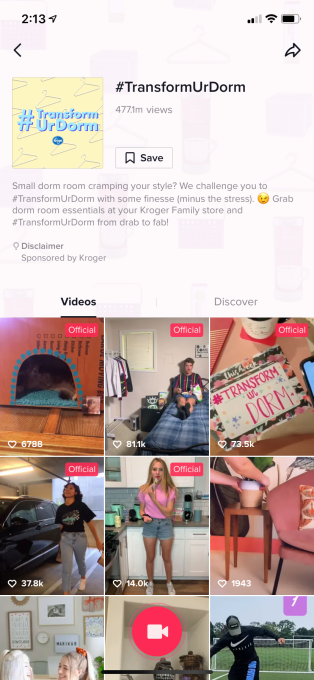
2. Use Shoppable Videos
In 2020, TikTok announced a new deal with eCommerce giant Shopify to integrate Shopify’s more than 1 million eCommerce merchants with TikTok’s growing audience.
Shopify merchants can now connect their shops to their TikTok for Business accounts and sell products on TikTok directly, through in-feed shoppable videos and ads.
This is a great way to grow your Shopify eCommerce store and your TikTok following at the same time.
3. Leverage TikTok for Shopify Features
The Shopify app itself has a host of built-in features to help you sell products on TikTok.
Here are a few noteworthy TikTok for Shopify features:
- TikTok campaigns: Merchants can create ad campaigns, target audiences, and track ad performance all in one place.
- Video template tool: This tool allows you to create a video ad using a TikTok template and any existing photo, text, and logo assets.
- Audience targeting: TikTok lets you target ads based on location, demographic, and behavioral metrics.
- One-click pixel: The TikTok Pixel allows you to track the performance of your campaigns. These analytics help drive conversions in your future campaigns.
- Creative tools: TitTok creative tools help turn Shopify merchant products into high-quality TikToks. This is a great way to connect with this new audience.
If you’re new to this integration, try everything. As marketers, A/B testing is our greatest asset.
You’ll never know what works until you try it.
How to Promote Your E-commerce Store on TikTok
Once you have your store connected to your TikTok channel, you can start creating content that promotes your products.
Here are a few effective ways to promote your Shopify store on TikTok to drive more conversions.
1. Embed Your TikTok Feed on Your Website
Certain apps, such as Vop, allow you to embed your TikTok feed onto your sales website.
This lets your customers see your products in action before they commit to a sale.
If you regularly showcase user-generated content on your TikTok feed, you can tap into genuine, digital, word-of-mouth advertising. This can go a long way in improving the trust customers have in your brand.
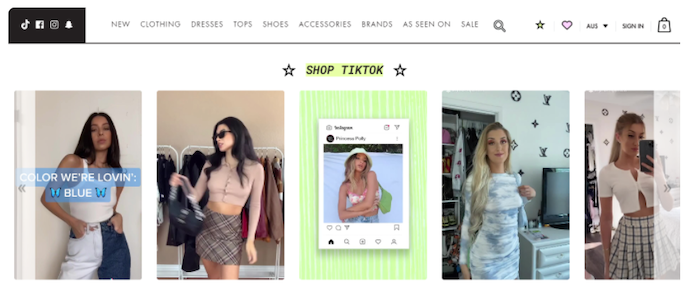
2. Use Paid Advertising on TikTok
Leveraging TikTok’s paid advertising features are a great way to tap into this exciting new market.
To begin creating ads, you need to know what you’re working with. TikTok content has specific specs and parameters you need to follow.
- Image files: JPG or PNG only
- Video files: MP4, MOV, MPEG, 3GP or AVI
- Aspect ratio: 9:16, 1:1 and 16:9
- Image resolution: 1200×628 is recommended, but not necessary
- Video resolution: 720×1280 pixels, 640×640 pixels or 1280×720 pixels
- Video duration: 5 to 60 seconds
- Brand name: The brand name you display in an ad must be between 2 and 20 characters. If you’re advertising an app, you can use 4 to 40 characters
- Ad description: Your ad description must be between 12 and 100 characters. You cannot use emojis in your description
From there, it’s all about creating engaging, creative, and fun ads that attract the attention of TikTok’s youthful demographic.
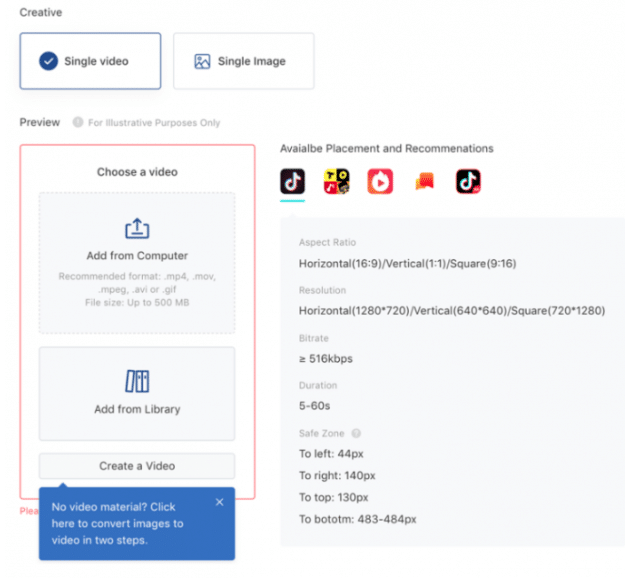
When creating ads, be sure to use audio. TikTok has always been an audio/video platform, so it’s important to create content that fits in this sphere.
Voiceovers, background music, and special effects audio can help make your ads more effective.
Get creative! Tiktok is a platform built for content creators. Make your ads fun, fresh, and exciting to attract new customers.
3. Include Your E-commerce Link in Your TikTok Bio
Every TikTok bio allows you to add a website link.
Use this space to add a link to your eCommerce shop, or any pages you want to increase traffic to, like relevant promotions or landing pages.
This tactic is a great way to guide users to the content you want to be seen and increase sales on TikTok.
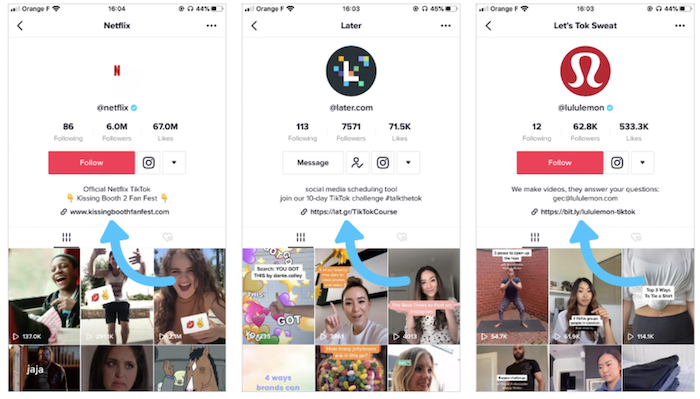
How to Track and Analyze the Sales You Receive Through TikTok
Installing the TikTok Pixel on your website, eCommerce store, and ads, allows you to track events along your customer purchase paths.
For example, if someone views a product, completes a payment, searches for a product, or adds billing info to your checkout flow, you can track it.
You can also track when a user downloads your content, clicks a button, or views a page.
This is helpful when you want to see if your eCommerce link in your profile bio is effective. Or, if you want to know how many people are making purchases through your shoppable videos.
The more data you collect, the better you can understand your customer journey.
From there, you can determine what works and where you should focus more resources.
How to Track TikTok Shopify Sales
The Shopify sales you make through TikTok can be managed directly within Shopify’s dashboard. This includes all ad creation, targeting, optimizations, and tracking.
Merchants can use Shopify-specific apps such as the “Magic TikTok Pixel” to better track conversions in TikTok campaigns.
When you install the Magic TikTok Pixel you will be able to:
- Track user event types such as registration, product page browsing, add to cart, and place an order.
- Track TikTok users that have made purchases. You can also analyze their data to determine future purchase trends, such as total sales per product and average order value.
- Use data to retarget and ensure your return on ad spend (ROAS) improves every time.
Conclusion
Now that you know how to sell products on TikTok, it’s time to start experimenting.
TikTok is still evolving as a platform, and we can expect even more sales opportunities coming out soon.
For now, it’s important to get started with the shopping features that are already available. This will help you drive more eCommerce sales and attract loyal audiences.
If you want to develop a more comprehensive social media ad campaign that includes TikTok, but need help doing so, reach out to our agency.
How have you found success when selling products on TikTok?
See How My Agency Can Drive Massive Amounts of Traffic to Your Website
- SEO – unlock massive amounts of SEO traffic. See real results.
- Content Marketing – our team creates epic content that will get shared, get links, and attract traffic.
- Paid Media – effective paid strategies with clear ROI.











